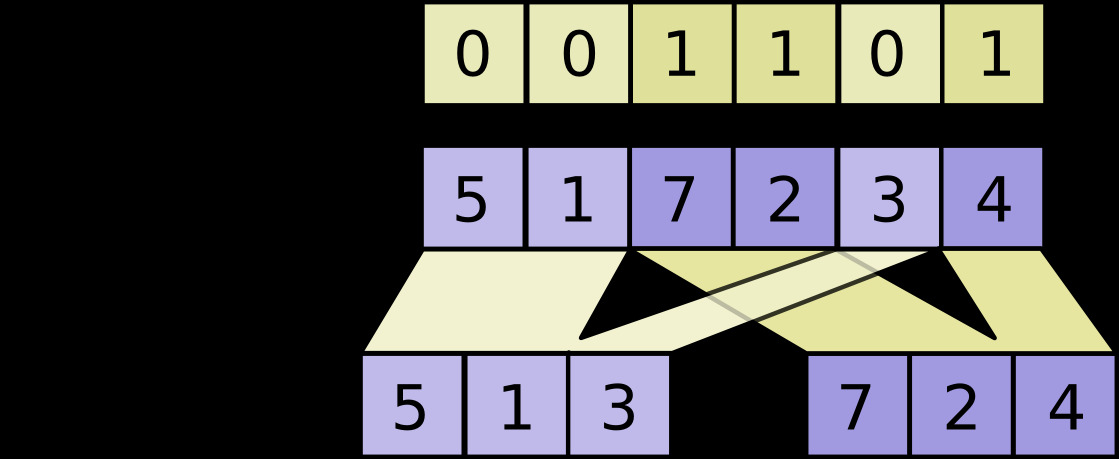使用来自 partitions 的索引将 data 划分为 num_partitions 张量。
用法
tf.raw_ops.DynamicPartition(
data, partitions, num_partitions, name=None
)参数
-
data一个Tensor。 -
partitionsTensor类型为int32。任何形状。[0, num_partitions)范围内的索引。 -
num_partitionsint即>= 1。要输出的分区数。 -
name操作的名称(可选)。
返回
-
与
data具有相同类型的num_partitionsTensor对象的列表。
对于大小为 partitions.ndim 的每个索引元组 js ,切片 data[js, ...] 成为 outputs[partitions[js]] 的一部分。带有partitions[js] = i的切片按照js的字典顺序放置在outputs[i]中,outputs[i]的第一个维度是partitions中的条目数等于i。详细地,
outputs[i].shape = [sum(partitions == i)] + data.shape[partitions.ndim:]
outputs[i] = pack([data[js, ...] for js if partitions[js] == i])data.shape 必须以 partitions.shape 开头。
例如:
# Scalar partitions.
partitions = 1
num_partitions = 2
data = [10, 20]
outputs[0] = [] # Empty with shape [0, 2]
outputs[1] = [[10, 20]]
# Vector partitions.
partitions = [0, 0, 1, 1, 0]
num_partitions = 2
data = [10, 20, 30, 40, 50]
outputs[0] = [10, 20, 50]
outputs[1] = [30, 40]有关如何合并分区的示例,请参阅dynamic_stitch。

相关用法
- Python tf.raw_ops.DynamicStitch用法及代码示例
- Python tf.raw_ops.DecodeGif用法及代码示例
- Python tf.raw_ops.DepthToSpace用法及代码示例
- Python tf.raw_ops.DepthwiseConv2dNative用法及代码示例
- Python tf.raw_ops.DeserializeManySparse用法及代码示例
- Python tf.raw_ops.Dilation2D用法及代码示例
- Python tf.raw_ops.Dequantize用法及代码示例
- Python tf.raw_ops.DeserializeSparse用法及代码示例
- Python tf.raw_ops.DataFormatVecPermute用法及代码示例
- Python tf.raw_ops.DiagPart用法及代码示例
- Python tf.raw_ops.DecodeProtoV2用法及代码示例
- Python tf.raw_ops.Diag用法及代码示例
- Python tf.raw_ops.TPUReplicatedInput用法及代码示例
- Python tf.raw_ops.Bitcast用法及代码示例
- Python tf.raw_ops.SelfAdjointEigV2用法及代码示例
- Python tf.raw_ops.BatchMatMul用法及代码示例
- Python tf.raw_ops.OneHot用法及代码示例
- Python tf.raw_ops.ResourceScatterNdSub用法及代码示例
- Python tf.raw_ops.ReadVariableXlaSplitND用法及代码示例
- Python tf.raw_ops.GatherV2用法及代码示例
注:本文由纯净天空筛选整理自tensorflow.org大神的英文原创作品 tf.raw_ops.DynamicPartition。非经特殊声明,原始代码版权归原作者所有,本译文未经允许或授权,请勿转载或复制。
